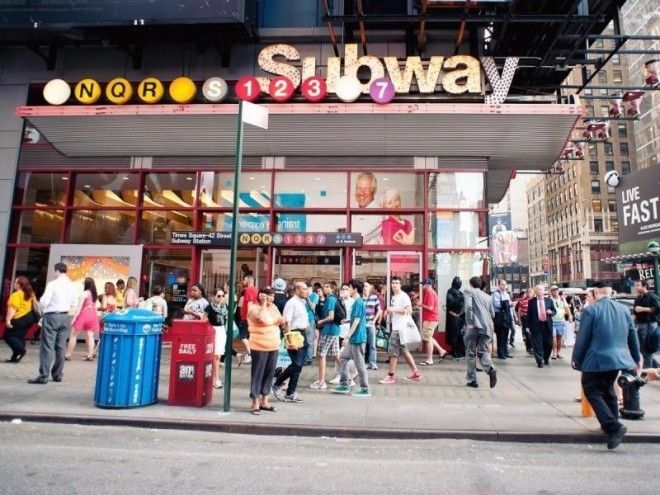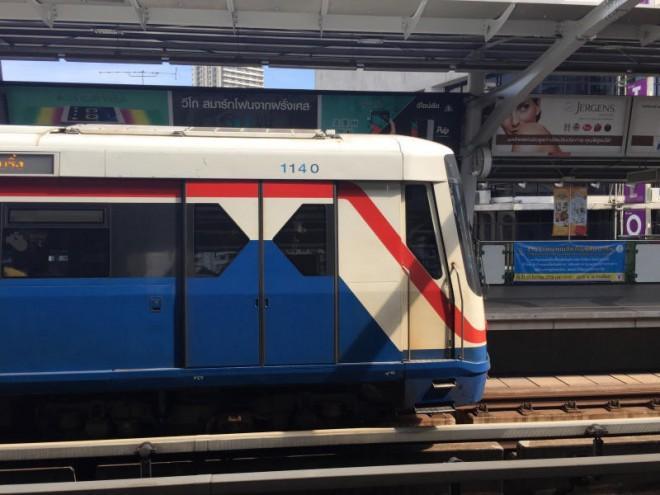Bangkok's transportation network is as diverse as its residents. Aside from scooters, taxis, and tuk-tuks (motorized rickshaws used for traveling short distances), there's a well integrated network of buses, ferries, subways, and trains.
The local buses and ferries are the cheapest option, but they're not air conditioned and not particularly user friendly for tourists.
The most efficient (but far more expensive) way to get around the city for tourists and more well-heeled Bangkok residents is the Bangkok Mass Transit System 9BTS) also known as the Skytrain.
Opened in 1999, the BTS is essentially an elevated subway, whisking riders three stories above the Big Mango's stifling traffic jams. It has two lines, the Sukhumvit and the Silom, linking Bangkok's main commercial, nightlife, and trendier shopping districts. It also connects with the MRT subway (a complementary system that runs underground) and has a seamless airport link.
Most trips in Bangkok — that aren't toward major destinations in the city core — will involve some combination of these different options. You might take the Skytrain for three stops, switch to the ferry, and then when you get into the neighborhood, you'd probably take a tuk-tuk or a scooter taxi for the last kilometer or two of your trip.
Coming from New York, I found Bangkok's system to be much better in many ways. Without further ado, here are the things I liked the most (and least) about the SkyTrain.
Bangkok's traffic is notoriously bad. This is Sukhumvit Road, one of the city's major arteries, and it's not even rush hour. Lots of people ride scooters so they can weave through the traffic.
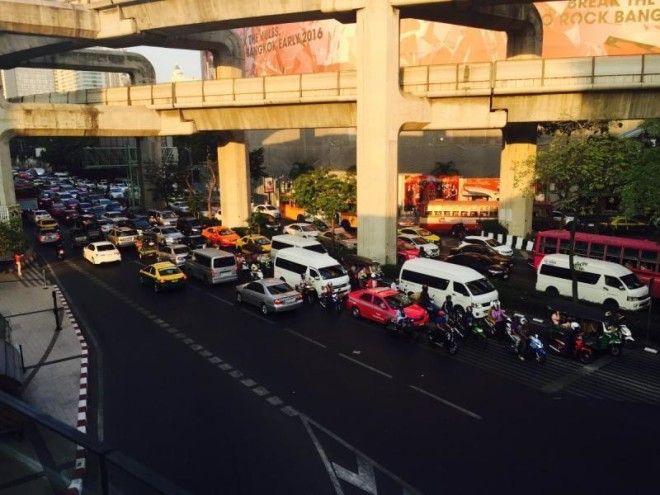
Here's another view, from street level. This is Yaowarat Road, the center of Bangkok's bustling Chinatown. A mix of tuk-tuks, pedal carts, taxis, and buses make driving exceedingly difficult here. It's also hot out, and the sidewalks are clogged with vendors and food stalls. While exciting, walking anywhere can be a slow, chaotic experience.
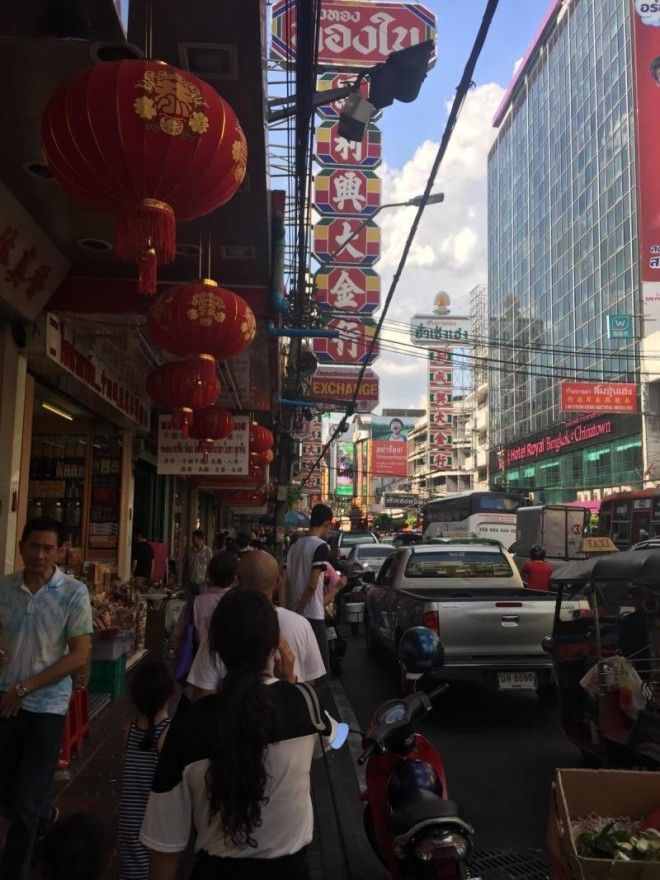
The best thing about the Skytrain is that it goes above the traffic. Below, it's above Siam station, one of Bangkok's busiest and smack dab in the center of the city surrounded by trendy shopping malls.
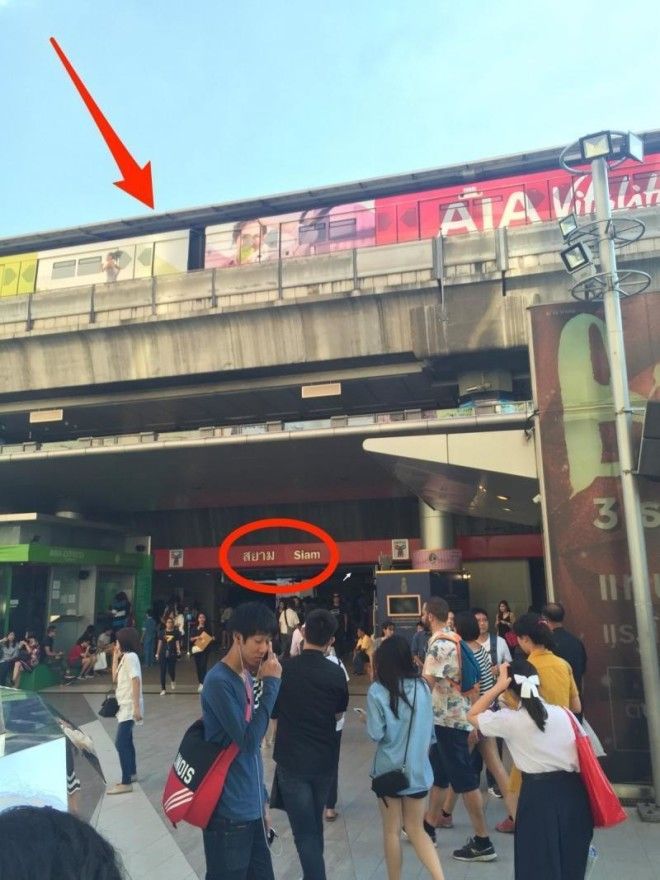
My girlfriend's family lives a few blocks away from Nana station. The entrances are clearly marked on the sidewalk and pretty much all the stations have escalators.

The escalators throughout the Skytrain system actually work. Compared to some of New York's decrepit stations, it's excellent. All of the important signs are clearly marked in both Thai and English.

There's easy-to-read, multi-language maps everywhere throughout the station. I didn't even have to ask for directions once!
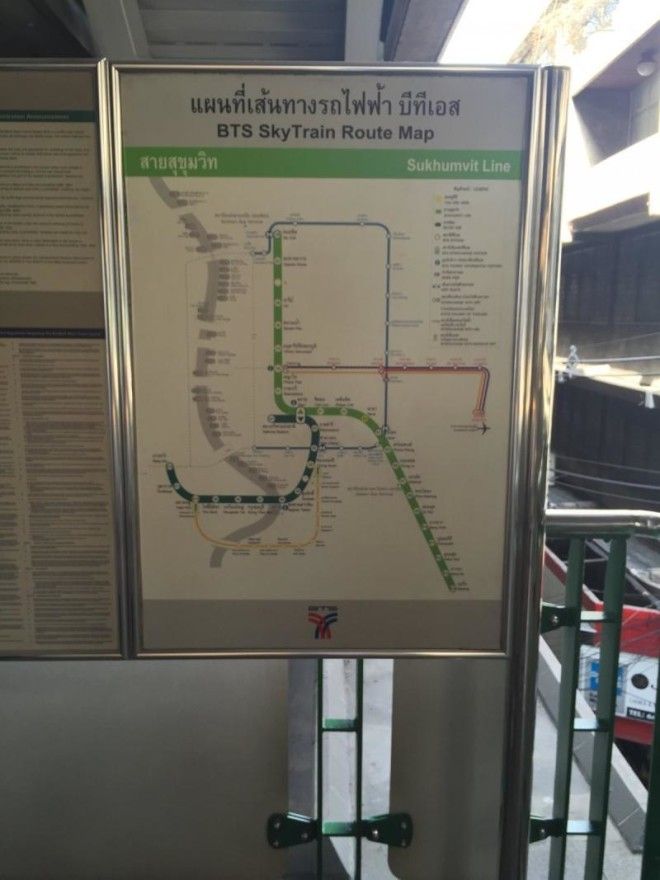
The stations are all immaculate. There's no trash anywhere. Because it's three stories up, you also avoid bumping into cat-sized rats.
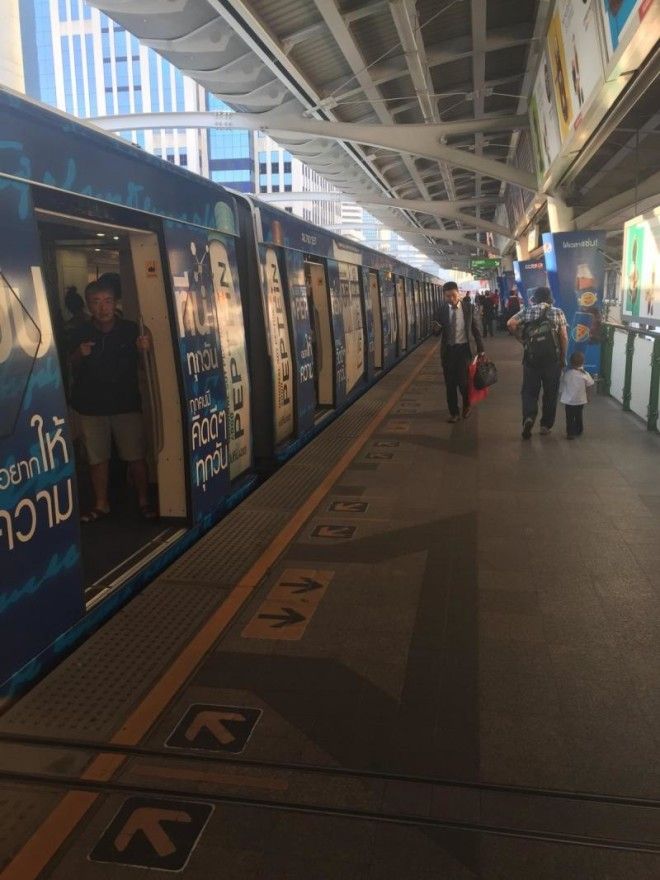
At the busier stations, automatic doors block access to the track. It helps keep the track clean — and less trash means fewer delays.
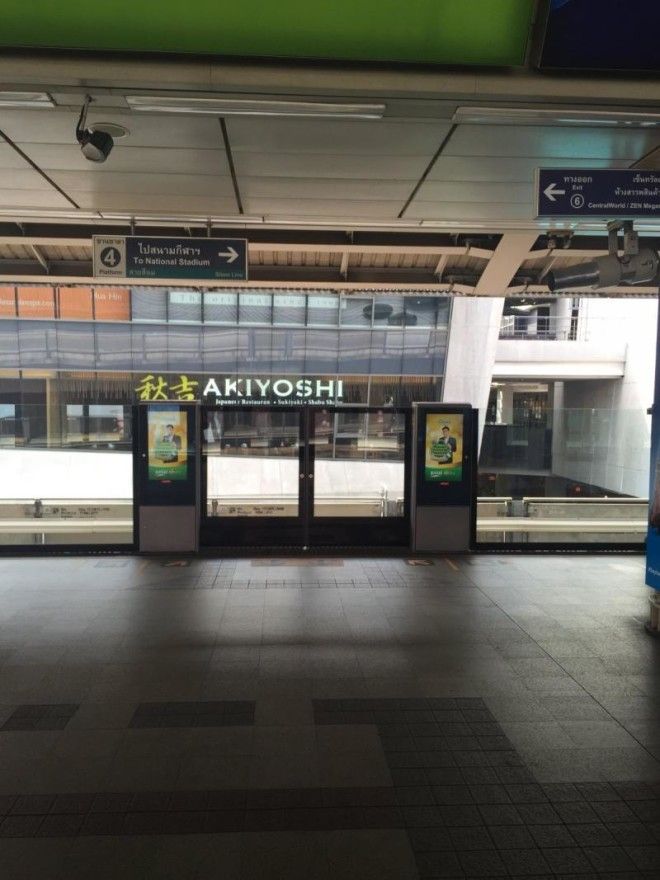
Here's the doors in action. When the train rolls up, the doors open. Safe and easy.

I can't stress this enough: the stations are impeccably clean and modern. The ads are a mix of Thai and English, and they're pretty psychedelic at night. It's way more colorful than any other transit system I've been on.
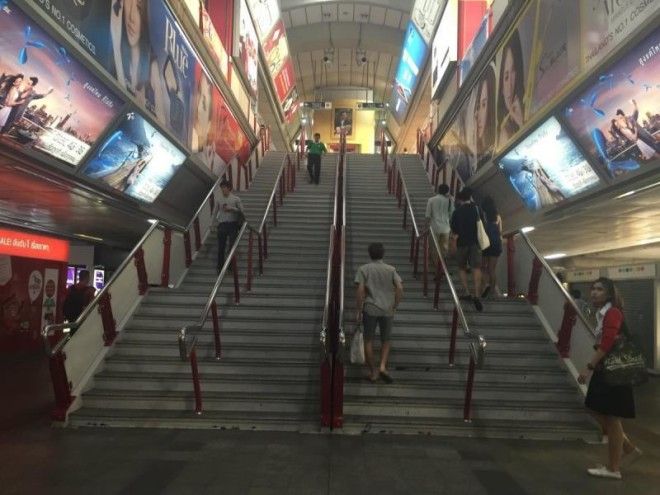
You can even stop in for a little sashimi on your way home. I don't know of any stops in New York where I'd feel comfortable eating anything, let alone raw fish.
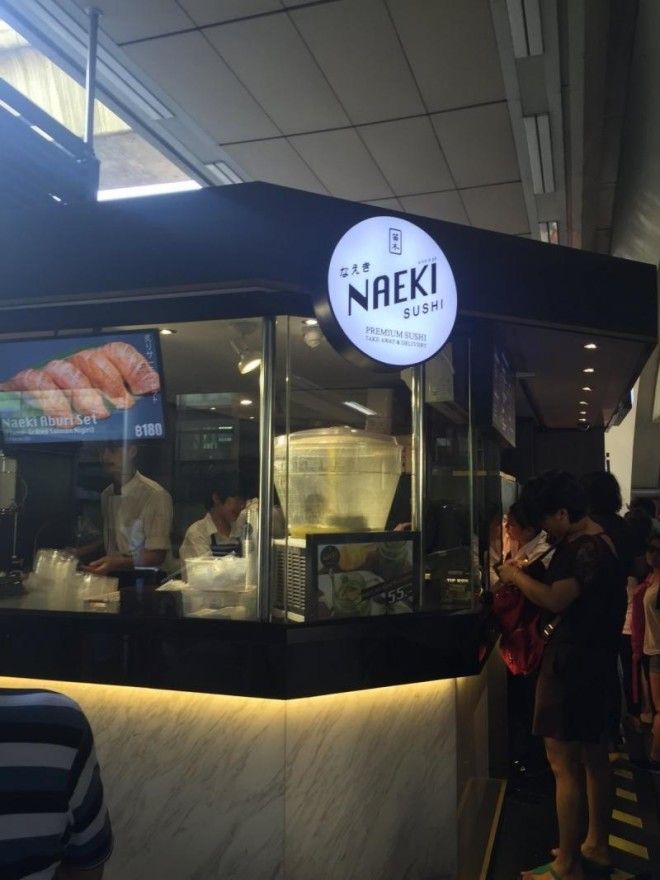
This is our stop, Nana station, at night. Again, it's well-lit at all hours, but part of the reason the system is so clean is that it closes between midnight and 6:00 a.m — one area where New York's MTA has it beat. You can take most trains in New York 24/7.
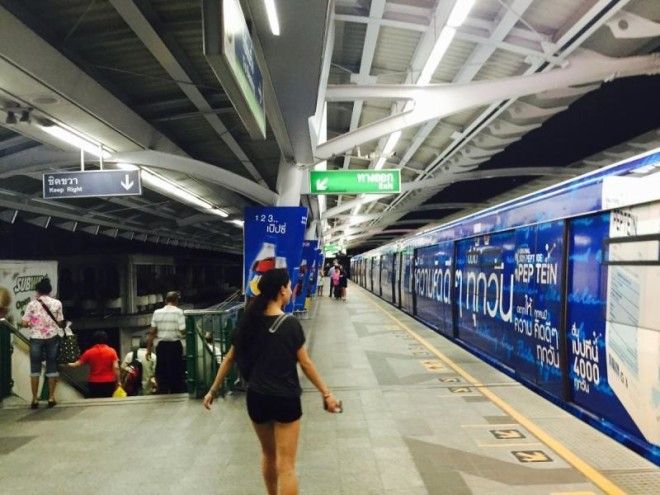
One of the best things about the Skytrain is how orderly it is. The platforms all have arrows telling you where to stand and exactly where the doors will open. And people actually follow the rules. Probably because guards stand at every station — I got yelled at for stepping across the yellow line to take this picture.
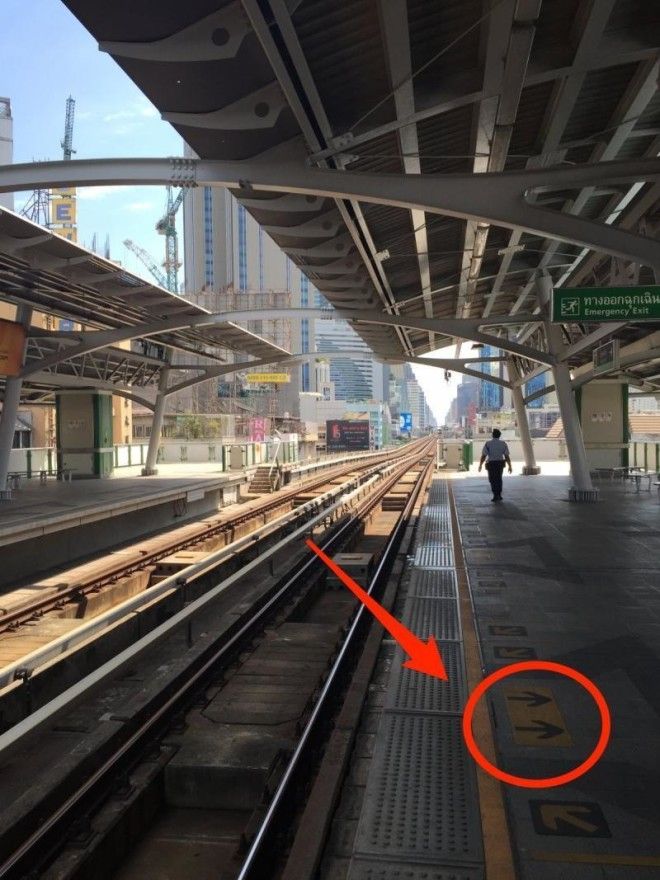
Here's what it looks like when it's busy. People truly do line-up and respect the order. It's amazing, compared to New York.
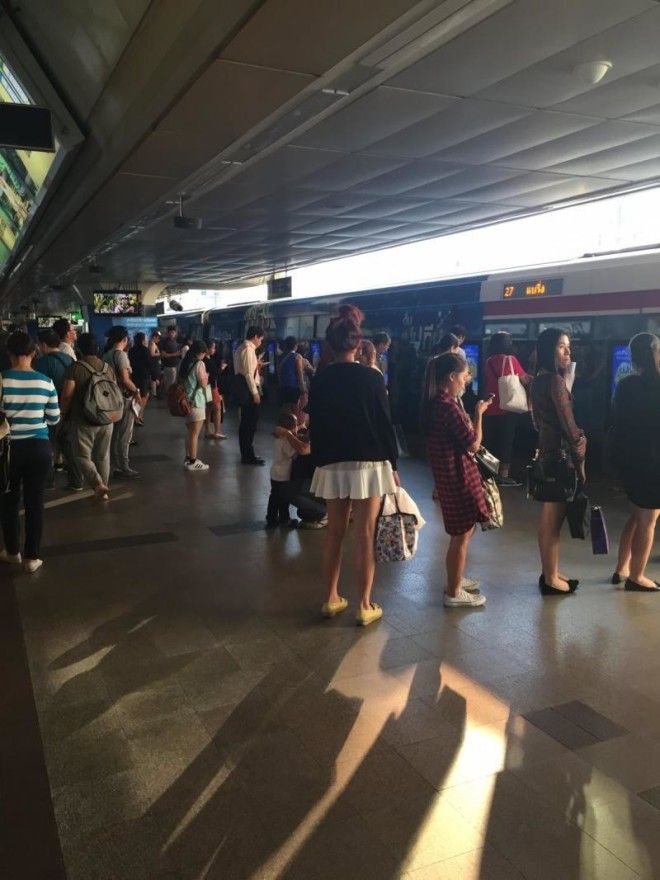
Maybe I'm obsessive, but I can't get enough of the organization on the platforms. It gets really busy, so the fact that people follow the rules is huge.
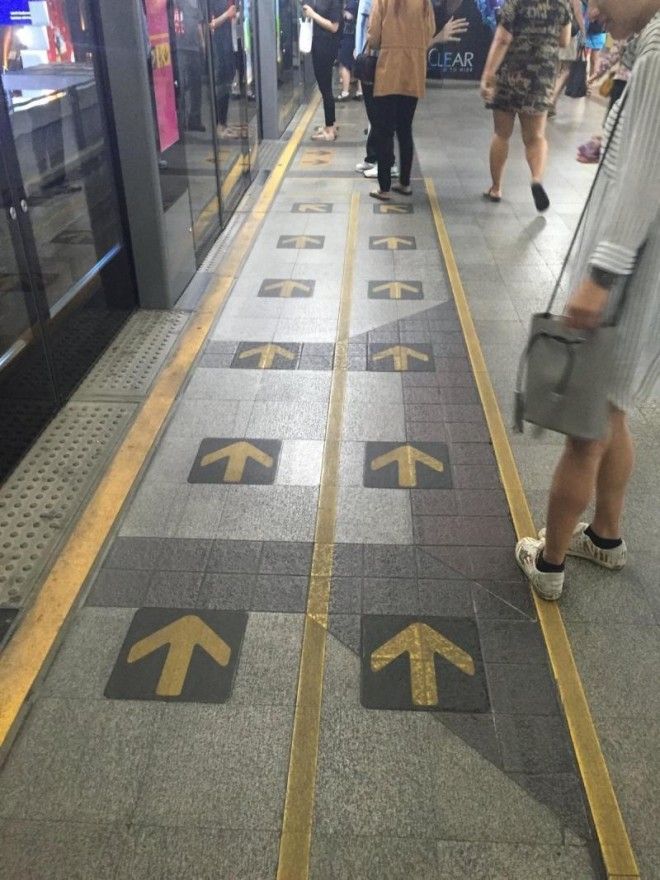
This was New Year's Day, one of the busiest shopping days in Bangkok. As you can see, it's crazy, but the lines are still well managed.
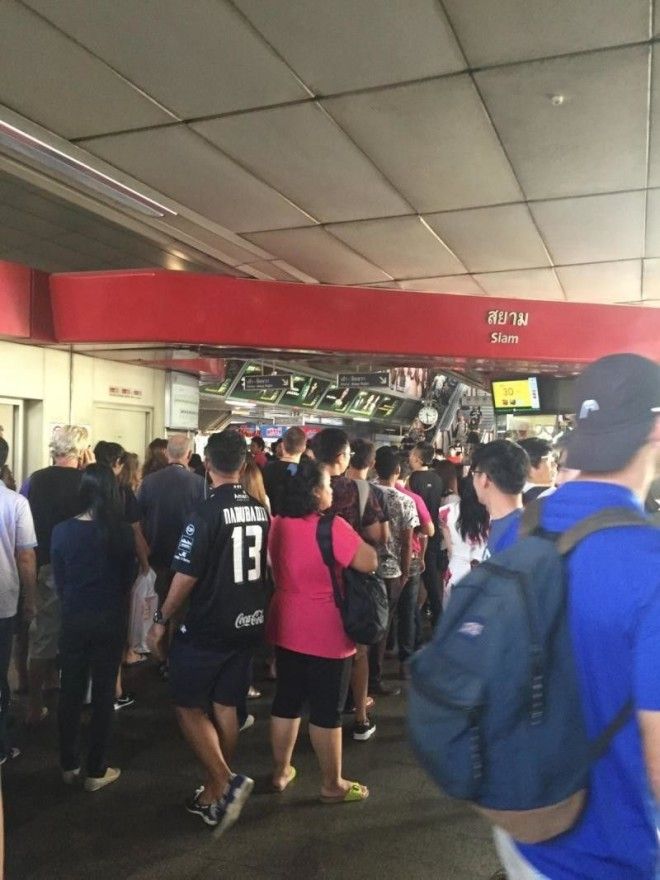
The cleanliness and order extends to the interior of the trains as well. There are plenty of handles and bright windows for taking in the view. Since you're above ground, you can actually see the sights as you travel. The cars are also air-conditioned, which is critical because Bangkok's weather can be stifling.
Advertising
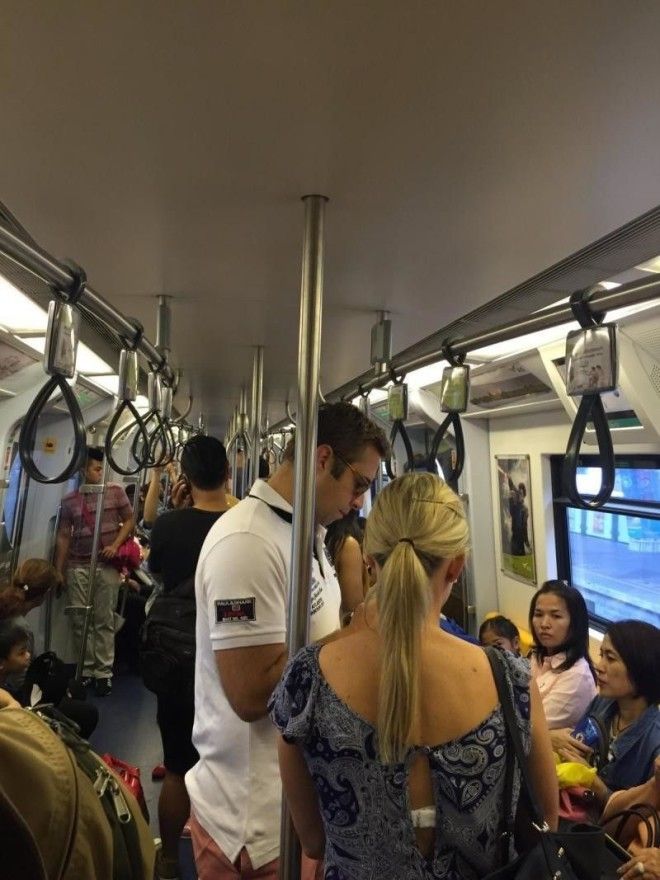
There's also handy screens in every car. They're mostly used for advertisements, anything from ramen and fish ball soup to the newest Toyotas. In Thailand, they take their royal family extremely seriously: the King's song (also the Thai national anthem) is played every day over these screens and in the stations at 8 a.m. and 6 p.m. sharp. When the anthem comes on, everyone stops walking and stands still. It's fascinating to see.
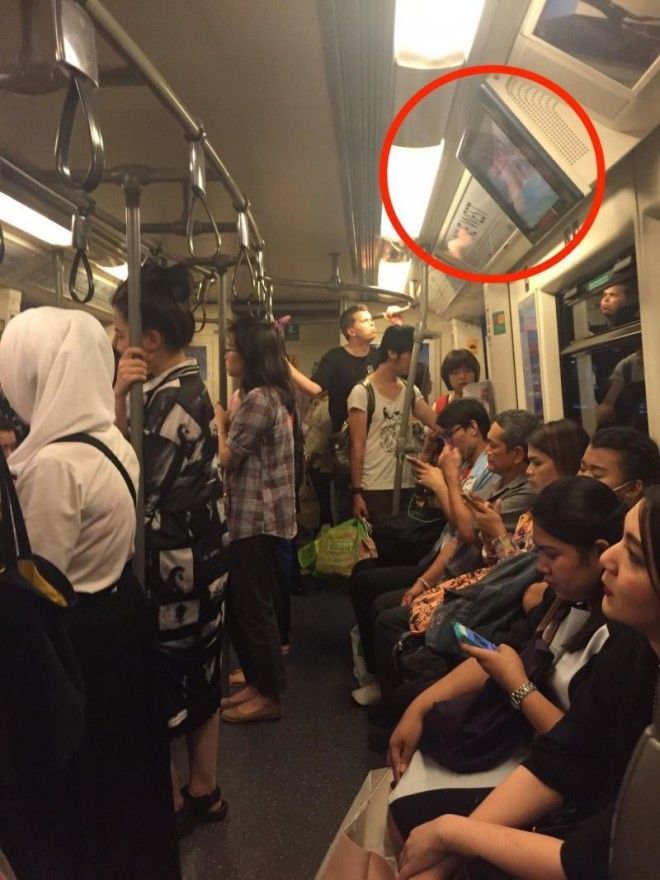
The King's image is on billboards all over the city and throughout the Skytrain system. I took a picture of this billboard — which is almost three stories high — from a moving train. Thailand has undergone a politically tumultuous last few years, and this is a clear (if slightly ominous) reminder of who's in charge.

Every station has machines you can use to buy tickets with change. There's also a window you can go to if you prefer interacting with people. Note the maps, in both Thai and English, everywhere. It's much more user friendly than New York's subway, but it's also a fraction of the size.
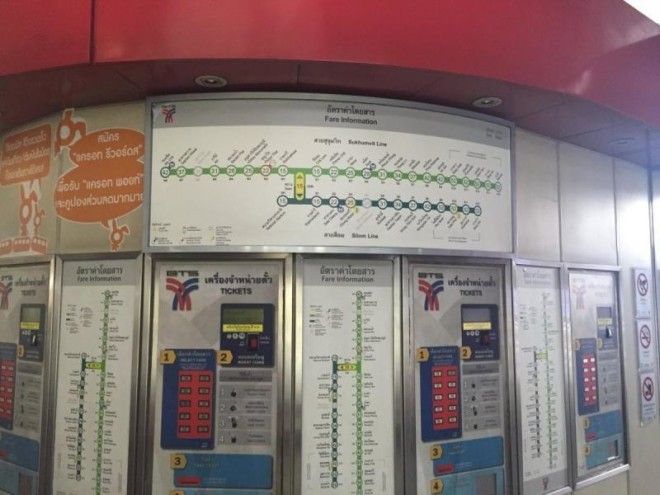
Since we weren't using the train on a regular, commuting basis, we bought single ride tickets. The fares are zoned and can run anywhere from 15 (about 41 cents) to 42 baht ($1.15). While this is cheap for New York standards, it's considered expensive by the average Thai.

Children under 90 centimeters, however, ride free.
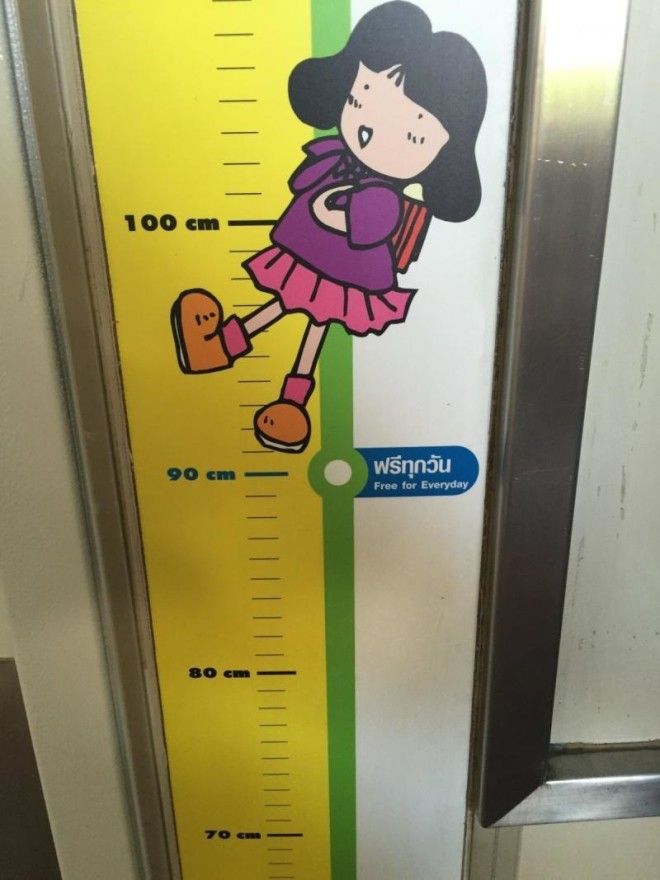
If you live in Bangkok or you plan on riding the train multiple times a day, you can purchase a Rabbit card with this machine. The Rabbit card functions as an e-money system. You can load it in increments of 100 baht ($2.75), and every time you swipe, your balance declines. You can also use your Rabbit card in place of cash at many local retailers in Bangkok. Want Starbucks, or need to grab something at the pharmacy on your way to work? Use your Rabbit card.
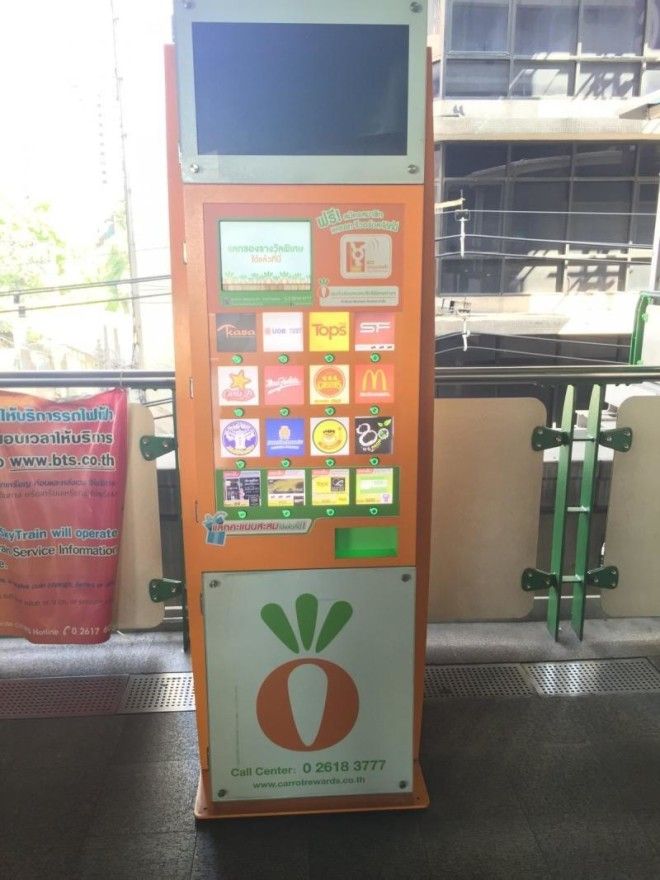
There's also Rabbit & Carrot stores in every station, where you can do everything from load up your Rabbit card, to pay your internet and waterbills through Thailand's mPay provider, a private company founded by Thailand's former prime minister, Thaksin Shinawatra.
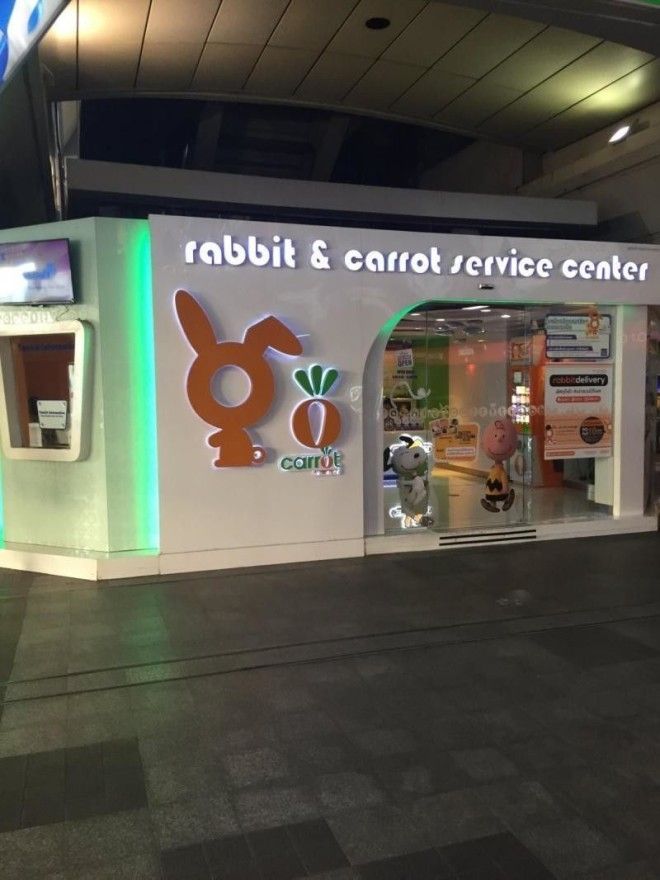
After you purchase your ticket, you slip it into the automated gate to get to the platform. Here's my girlfriend demonstrating how it's done. If you have a Rabbit card, you can just tap the machine — no swipe necessary.
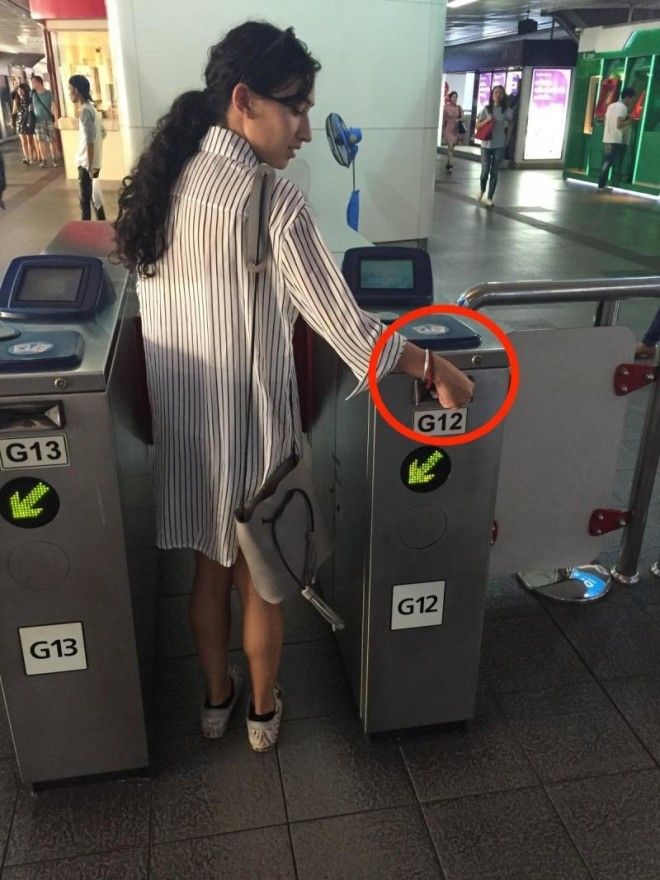
Once you slip your ticket in, the machine spits it back out and the gates open. Public service announcement: You have to keep your ticket on you, because you pass through the same machines on the way out. I promptly lost my ticket the first time I rode ...
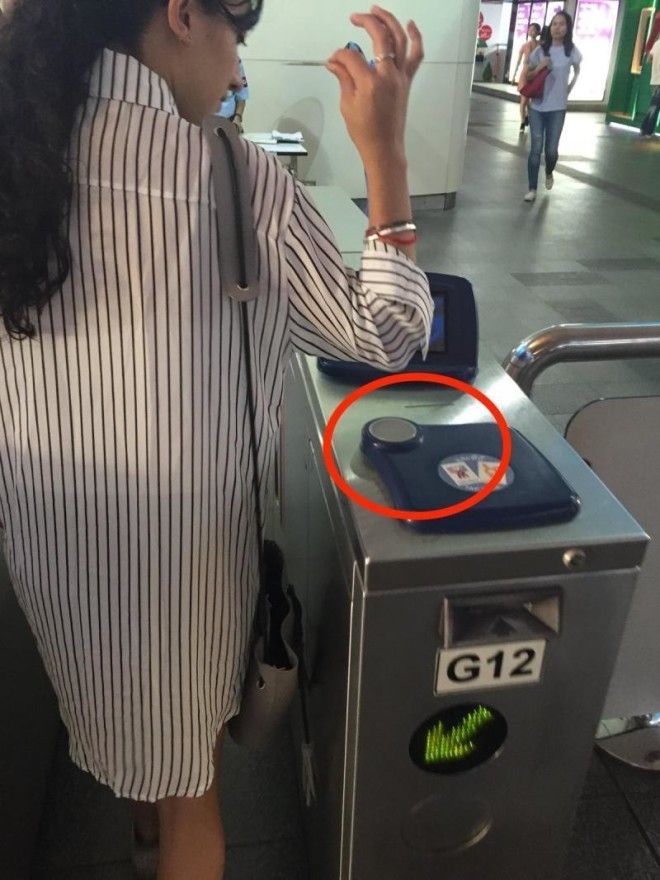
I was thoroughly impressed with Skytrain. It's clean, efficient, and modern, and there's hardly ever any delays. Tourism is a significant aspect of Thailand's GDP, so it's important that the system is super user-friendly.
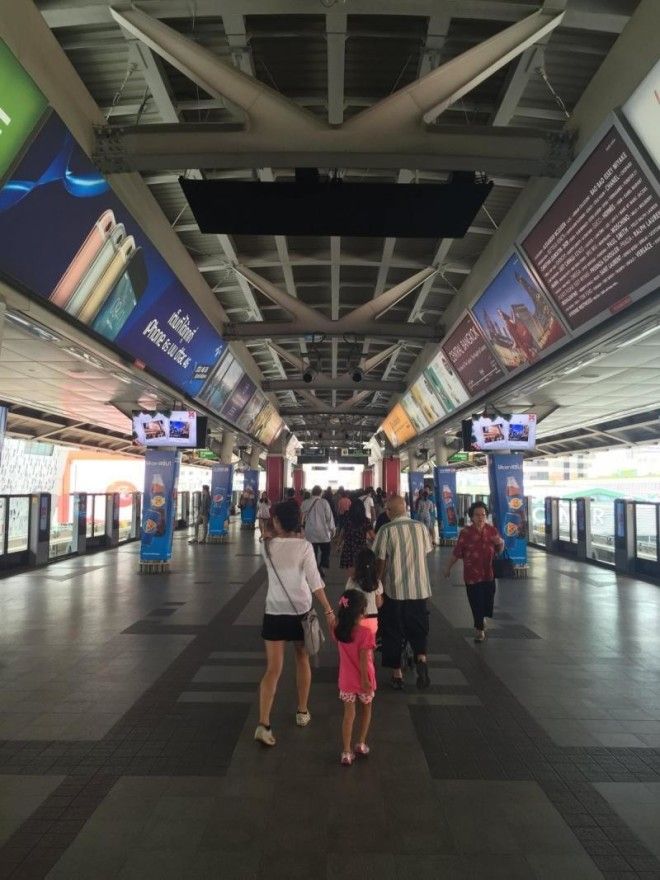
While Bangkok's transportation system is clean and modern ...
